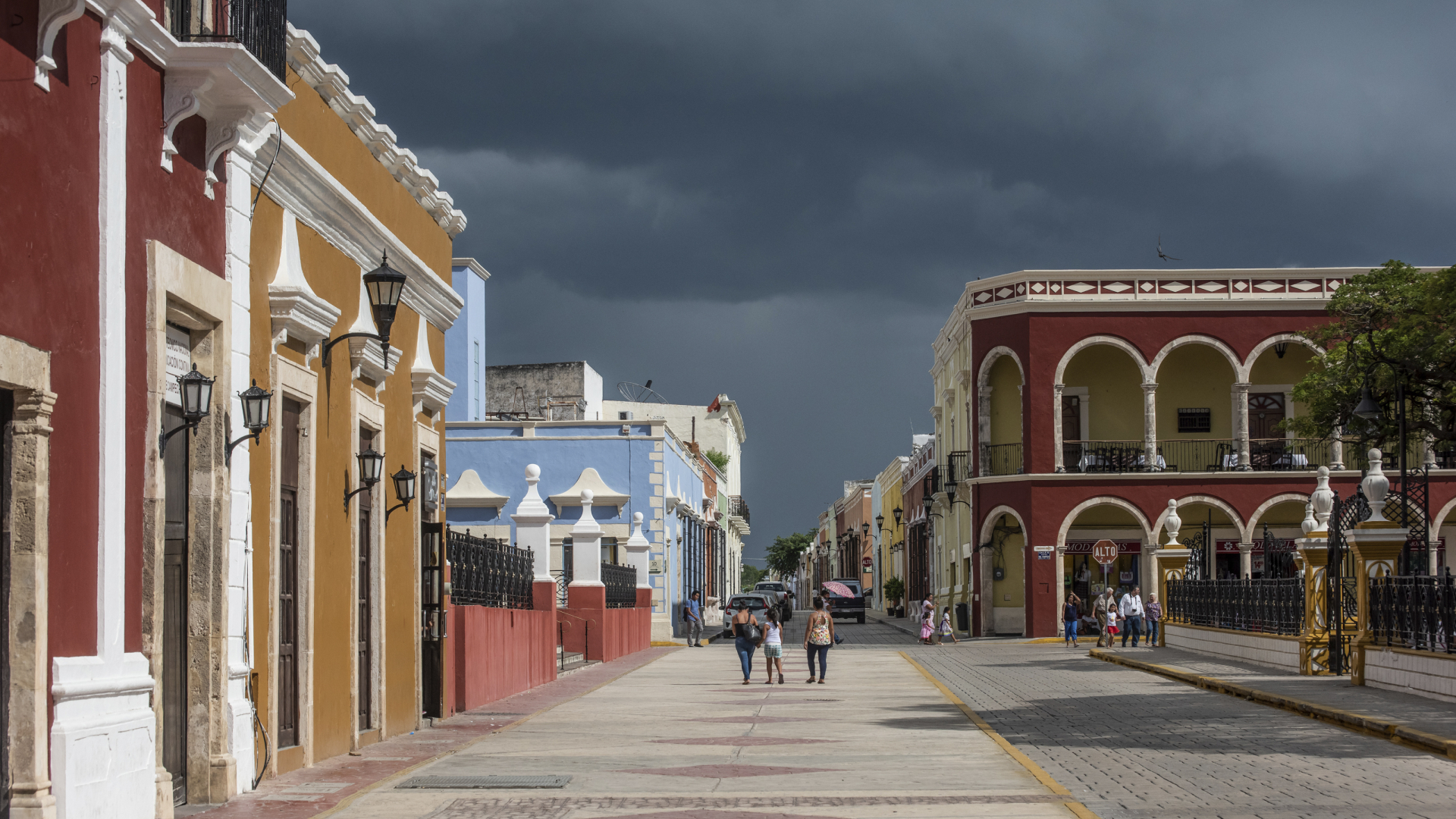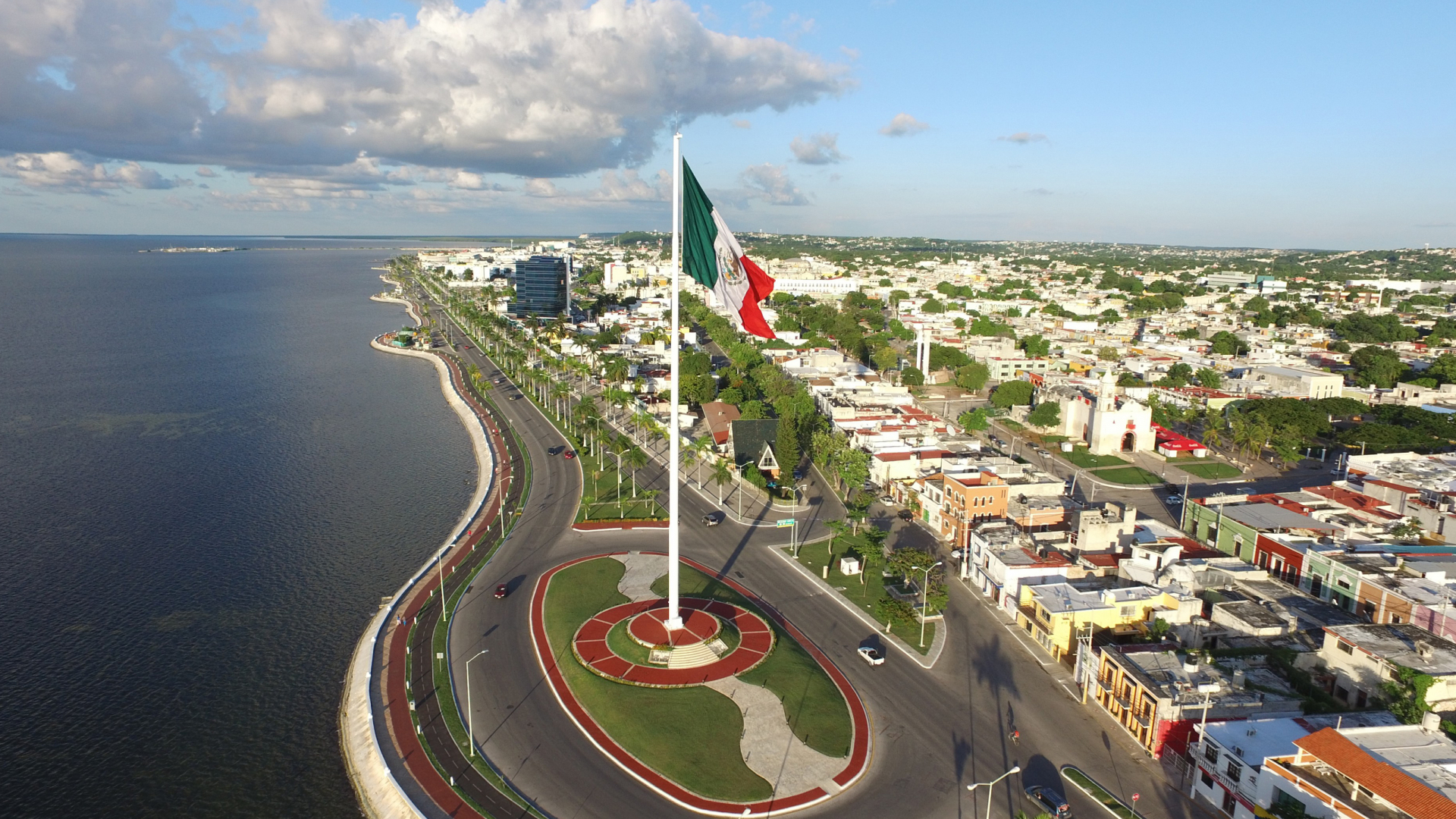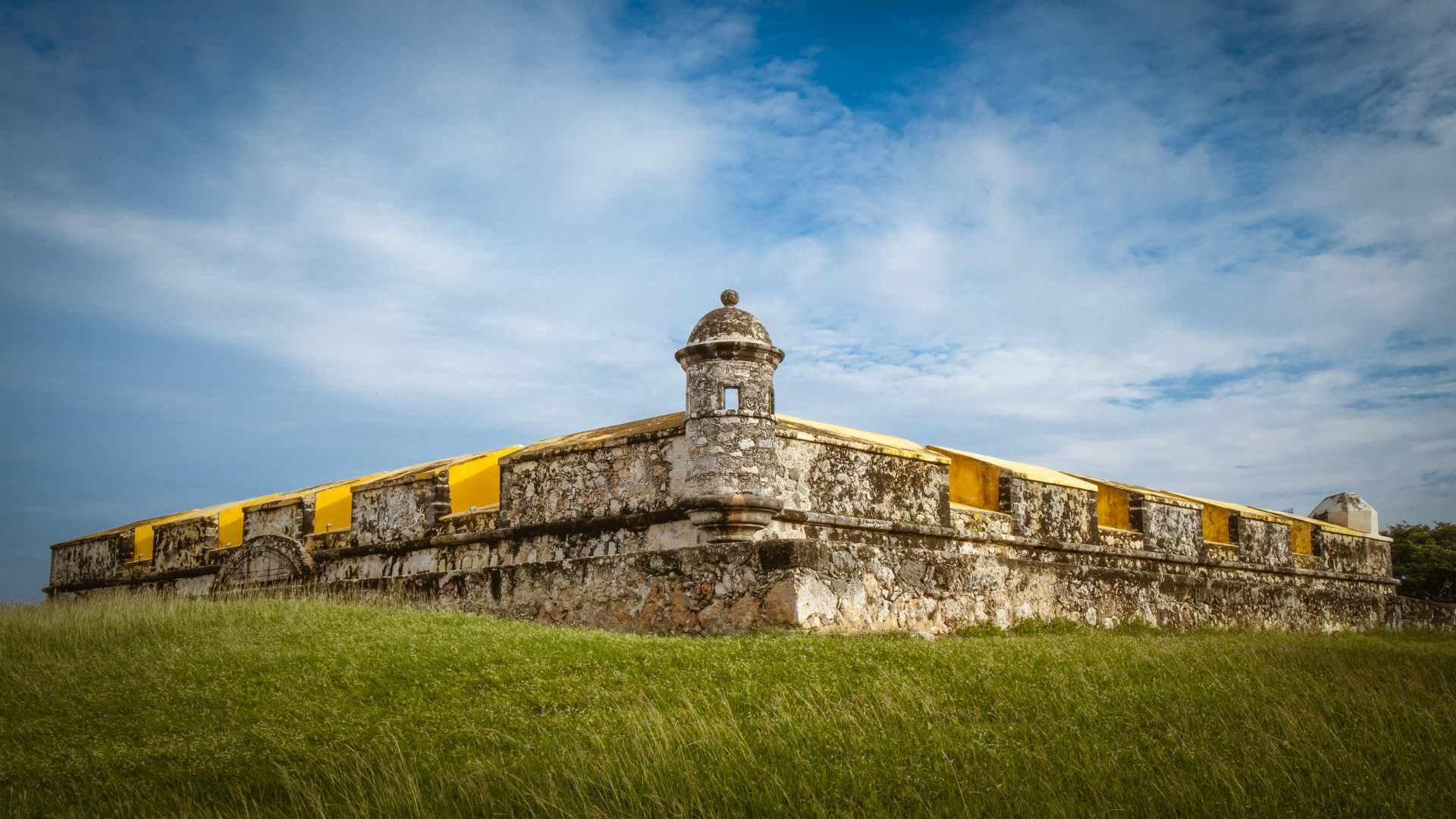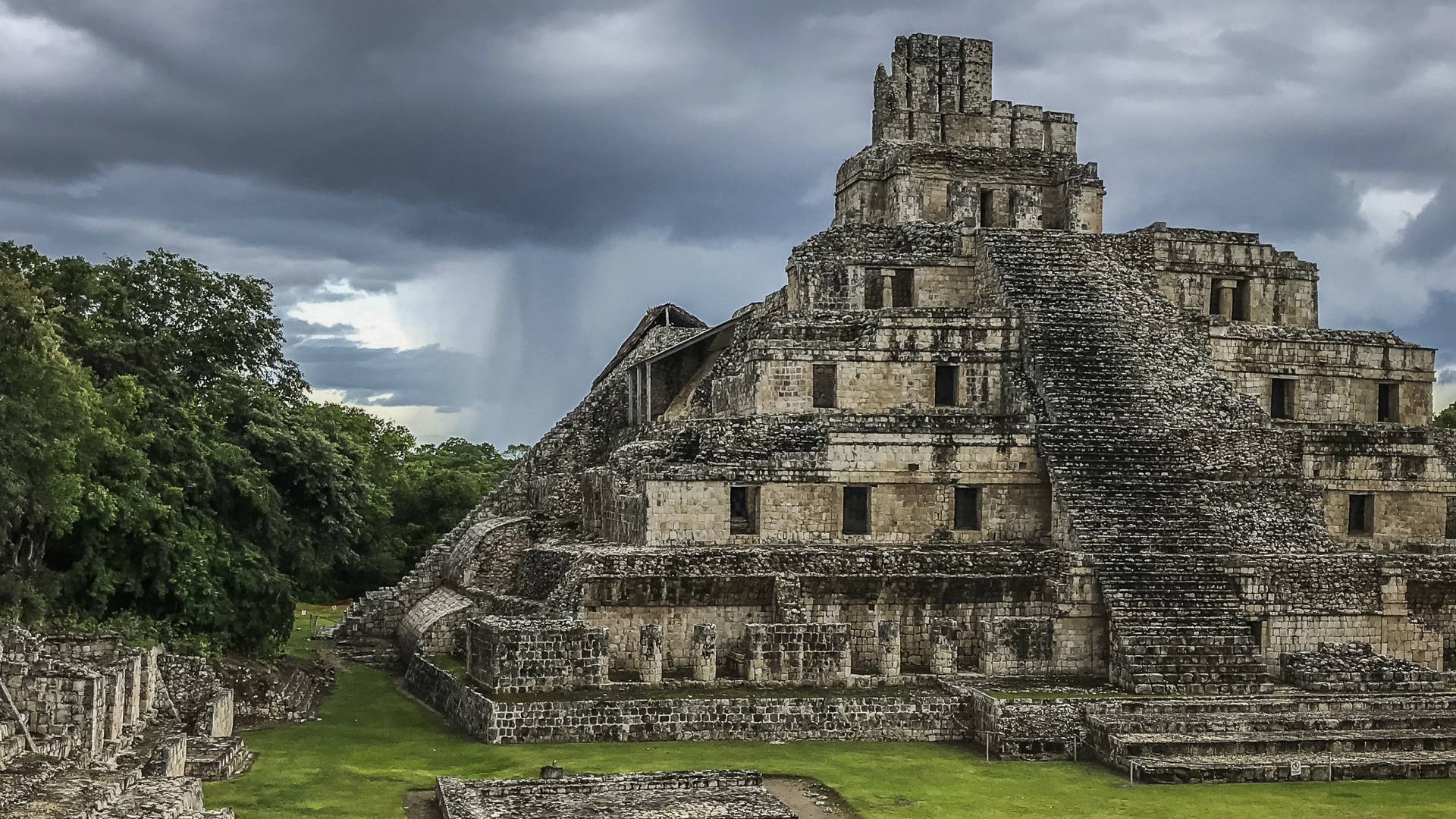“The City of San Francisco de Campeche, it’s a golden mine. Any place in the world could offer you as much as fishing, as much as culture, as much as gastronomy, and we could keep saying everything that you need. And it’s all true, Campeche offers you all of it in one place.
This unique city will illustrated you not just with the most consistent baby tarpon fishing in the world, but the experience of a different point of view of the usual stuff. I always like to say that the things that we live each day of our lives as routine, the incoming tourism will appreciate as perfection.”- Alex Jr. (Pachin)
Non angling activities
Campeche is a great destination for individuals, families, and couples. The city is a UNESCO World Heritage site offering, in addition to excellent tarpon fishing, many cultural activities and tourist attractions. Campeche’s spectacular white sand beaches and nearby Mayan towns always leave visitors enchanted.
We currently offer a Non-Angling package. While anglers go out with our guides, others in the family or group are attended by our tour guides, who transport them to the marvelous ancient Mayan city of Edzná, located only 45 minutes from Campeche’s historic downtown. City tours are also an excellent option, including visits to museums and markets.

Campeche City
The city of Campeche is an example of urbanism in a baroque colonial city, with a reticular and regular plan, its urban trace, a model of colonial port cities, reflects the main role that it played as a commercial, religious and military connection point characterized by its high level of integrity and homogeneity. More than one thousand buildings with a historic value have survived as witnesses of space and temporal superimposition of several significant historic periods of Mexico.
Due to the constant attacks of both English and Dutch buccaneers and pirates such as Francis Drake, John Hawkins, Laurens de Graaf, Cornelis Jol, Jacobo Jackson, Jean Lafitte, Francisco de Grammont, Bartolomé Portugués, William Parker, Francisco Nau, Edward Mansvelt, Henry Morgan, Lewis Scot, Roche Braziliano and Michel de Grammont for almost 160 years, in 1686 the government started to fortify the city.[4]
The engineer Louis Bouchard de Becour was commissioned to unify all the defensive works that surrounded the city with a wall. At its completion, the wall surrounding the city of Campeche was 2,560 meters in length, forming an irregular hexagon around the main part of the city, with eight defensive bastions on the corners. These bulwarks now serve different functions:
- Santiago: Used as the Botanical Garden ‘Xmuch´haltún’. Reconstructed.
- San Pedro: Former prison.
- San Francisco: Protects the Land Gate. Houses the library of the INAH.
- San Juan: Protects the Land Gate.
- Nuestra Señora de la Soledad: Also protects the Sea Gate. It is the largest one and holds the Museum of City History.
- San Carlos: Holds the City Museum. This fort was the first one built. Protects the Sea Gate.
- Santa Rosa.
It also contained four gates to allow access to the main quarters. The main entrances are the Puerta de la tierra (“Land Gate”), built in 1732, and the Puerta del mar (“Sea Gate”). The Land Gate is kept as a tourist attraction, having a light and sound show three nights each week and keeping original supplies and items from the 17th century. The other gates were Guadalupe and San Román, connecting to the outside neighborhoods.
Additionally, two main forts protected the city from two nearby hills on each side, the forts of San José el Alto (built in 1762) and San Miguel. These forts gave long-range artillery coverage and served also as look-outs. They were built before the walls of the city. The fort of San Miguel is used as a museum and houses a collection of pre-Hispanic items. The fort of San José houses a collection of boats and weapons of the period.
Landmarks
Mayan Sites
Calakmul (meaning “the city of two adjacent pyramids”) is one of the largest Mayan centers ever discovered. It is located in Campeche’s tropical forest approximately 30 kilometers (19 miles) north of the Guatemalan border. The well-preserved ruin is rich in historical artifacts of the Mayan culture. A smaller yet equally astonishing archaeological site, Chicanna, is located nearby. Some researchers believe Chicanna was a retreat for privileged Mayan citizens, due to the elegance and ornamental splendor of its buildings.
Ecotourism
The Calakmul Biosphere Reserve, covering almost 15 percent of the state in southeast Campeche, is Mexico’s largest nature preserve. Jaguars, eagles and over 230 bird species make their home in the sprawling sanctuary. The biosphere also features several archeological sites, including El Ramonal, Hormiguero, Chicanna, Río Bec, Becán and Calakmul.
The Ría Celestún Biosphere Reserve, created in 1979, safeguards a coastal wetland environment that is home to pink flamingos, turtles and migratory birds. Together with El Palmar State Reserve in Yucatán and Los Petenes Biosphere Reserve in Campeche, Ría Celestún constitutes the largest coastal wetlands in the western Yucatán Peninsula.
The Balamkin Reserve focuses on the protection of endangered reptiles and amphibians. Other animals that live in the reserve include all five feline species indigenous to Mexico (jaguar, ocelot, tigrillo, jaguarundi and puma), monkeys, deer, toucans, grey eagles and falcons.
Historical Center
As required by the Spanish sovereign, the historical center of Campeche was patterned after a chessboard. The main town square and central park are situated on the square closest to the sea. Ostensibly intended to benefit the people of the community, this square was used primarily by the town’s Spanish royalty and political authorities for parties and ceremonies.<p/ >
Colonial Center
Campeche’s cathedral, Catedral de la Concepción Inmaculada, stands near the main plaza; it was completed in the early 1700s. The Government Palace is a modern building located just northwest of the plaza. St. Michael’s Fort (Fuerte de San Miguel) in the southwest quarter houses an archaeological museum containing artifacts from the Edzna and Jaina ruins. Campeche’s brightly colored homes and narrow streets filled with colonial architecture appeal to both locals and visitors. In the neighborhood of San Román, visitors can see the Black Christ, a six-foot ebony statue brought to Mexico from Italy in 1575.





